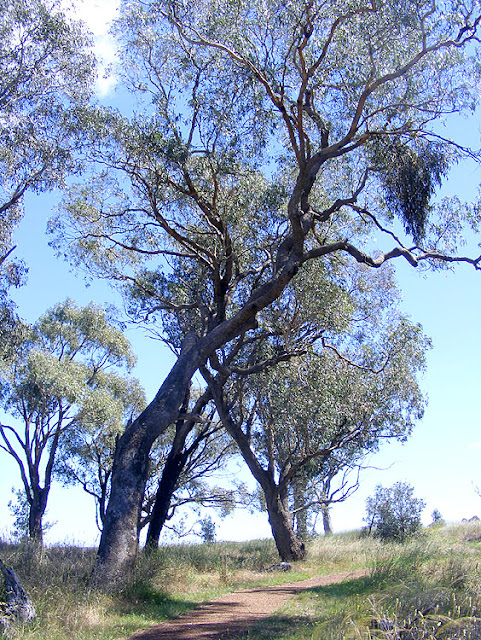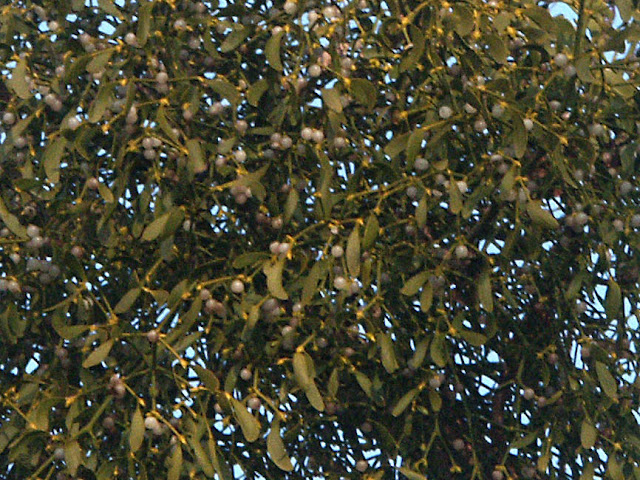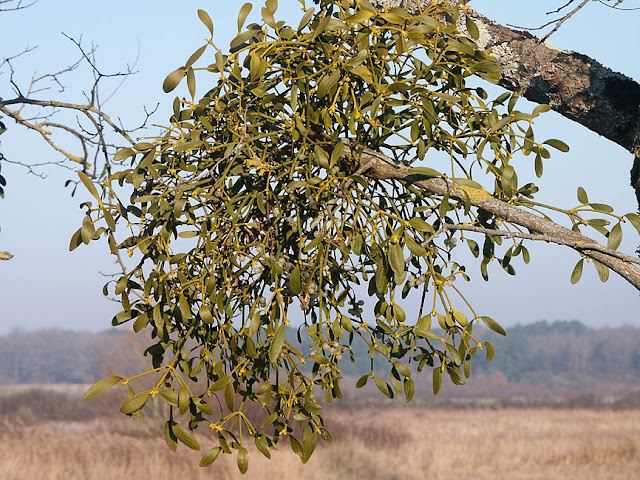Mistletoe is gui in French, pronounced 'gee'. Be careful not to lengthen the vowels so they sound like the word has two syllables 'ge-e'. It is short and sharp, and the g is hard, like in good.
It is a hemiparasitic plant which does not have roots, but fixes itself to a host tree and proceeds to divert some of the tree's sap to itself. It only takes water and mineral salts from the tree, and has its own chlorophyll so it can also photosynthesise to obtain nutrients. That means it does not attack the tree at a cellular level and does not decay wood. However, it can stress the tree in times of drought sufficiently to cause the tree not thrive.
 |
| Mistletoe on plantation poplars. |
The berries appear in the winter, and several species of bird, such as thrushes, blue tits, blackcaps and nuthatches eat them happily and are responsible for disseminating the undigested seeds. One in every ten thousand will produce a new plant. The berries are however toxic to humans.
 |
| Eucalyptus bridgesiana with an Australian native mistletoe, in Canberra. |
In the past harvested by Druids, it is a plant, along with holly, that is associated in Europe with decorations for Christmas and New Year celebrations.
 |
| Mistletoe on an oak tree. |
Mistletoe is most commonly found on apples and poplars, very rarely on elms and oaks, and never on beech and plane trees.
Because mistletoe remains green throughout the winter, when the host tree loses its leaves and looks dead, it was associated in Celtic cultures with immortality. It was considered a sacred plant, believed to chase away bad spirits and cleanse souls, as well as cure bodies and neutralise poisons. The most sought after was mistletoe that grew on oak, because it was rare, and because whilst mistletoe was associated with the moon, oak was associated with the power of the sun.
 |
| Sticky mistletoe seeds, deposited by a bird. |
In northern Europe, France included, there is a long tradition of hanging mistletoe from the ceiling or above the front door. At midnight at Christmas and/or New Year, people take a berry and kiss, symbolising prosperity and long life.
In France it was sometimes hung above the entrances to cabarets, and in a few places it was associated with ceremonies involving the rich giving gifts to the poor at New Year.
These days there is some interest in European mistletoe Viscum album (Fr. gui blanc) as a possible source of medications for cardiovascular disease, a diuretic or as a treatment to reduce tumours (benign or otherwise) and warts.





No comments:
Post a Comment